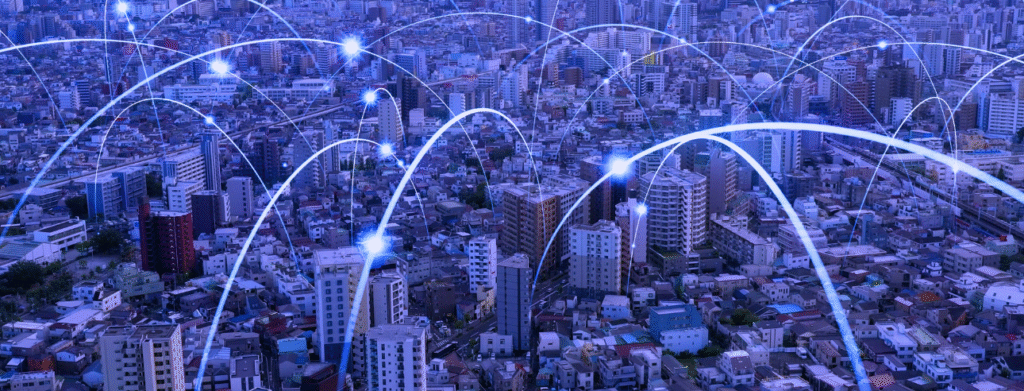
The Information and Communication Technology (ICT) sector is the foundation of our increasingly connected world. However, more people now expect constant connectivity and use demanding applications. These include high-definition video streaming and complex artificial intelligence training. As a result, energy consumption continues to rise. This growing demand for energy also increases the industry’s environmental impact. In the past, most efforts focused on performance and availability, often ignoring the environmental cost.
To solve this, it is necessary to innovate and create new solutions that use resources more efficiently and directly reduce energy consumption across the entire ICT ecosystem. Researchers have turned this urgent need into clear goals: reducing energy consumption and reducing the carbon footprint. It’s not just about saving energy in general. Their goal is to reduce quantitatively by factor 3-5, depending on the specific scenario, through smarter use of resources (both in planning and operations). They also want to demonstrate that it is possible to use zero-carbon ICT systems in the real world.
Research within EXIGENCE
The EXIGENCE deliverable 3.1 “Report on protocols and mechanisms for energy usage reduction” (available soon) is a key output of this research. It details the current status and early progress in finding ways to reach these ambitious energy efficiency goals. The review of existing research found three clear and very promising areas to focus on for future work to reduce energy use:
- Green Orchestration: This involves planning and continuously adjusting network or system resources. It aims to prevent having too many resources or wasting energy and carbon. The aim is to match required resources more accurately with the actual system load and service-level agreements (SLAs).
- Runtime Service Scheduling (RSS): This covers choices made by anyone (users or providers) when a service starts or runs. The goal is to achieve lower overall energy consumption or carbon emissions for that specific service.
- User Incentivisation/Enablement: This seeks to create incentives for every “prosumer” in the ICT service chain to consider, in particular non-local, energy consumption and carbon emissions as a primary concern.
These three areas are explored in depth in the deliverable, reviewing current knowledge and presenting initial progress made.
Exploring Key Research Areas
Green Orchestration is a complex process that automates and coordinates the deployment, management, and scaling of various interdependent components in a distributed system. It goes beyond simple scheduling (the detailed allocation of tasks) by overseeing the entire lifecycle, including inter-service communication and dynamic resource allocation. Platforms like Kubernetes (for containerised applications) and MANO (Management and Orchestration, particularly for virtualised network functions – VNFs) are fundamental in this domain. Effective energy and carbon emission management requires such orchestration systems due to the visibility, control, and automation they provide over distributed service components and their interactions. The research analyses how these platforms can be extended to incorporate energy and carbon awareness into decision-making processes, such as workload placement on cluster nodes or VNF orchestration within infrastructure. The goal is to leverage container technology (KNFs) via Kubernetes, often managed by MANO (like OSM), to enable flexible and potentially more efficient deployments. Custom scheduling algorithms and plugins in Kubernetes, along with the integration of energy-aware states in MANO, are key mechanisms being explored to achieve energy optimality based on real-time energy consumption and carbon footprint metrics.
Runtime Service Scheduling (RSS), in contrast to orchestration’s longer-term planning, focuses on the fine-grained allocation of individual tasks or workloads to available resources (CPUs, GPUs, network nodes) in near real-time. These decisions must be made quickly (milliseconds) under uncertainty. While the state of the art in RSS often targets general resource efficiency, this research focuses on adapting these mechanisms to prioritise energy and carbon efficiency. The document highlights research utilising machine learning (ML) techniques, such as Reinforcement Learning (RL), for dynamic scheduling decisions.
Promising results have been achieved in RSS, particularly applied to compute-intensive use cases like AI training in wireless networks. One approach uses Safe Deep Reinforcement Learning (DRL) to minimise energy consumption in Federated Learning (FL) while ensuring model performance. Another effort demonstrates how Multi-Agent Reinforcement Learning (MARL) can reduce the resource footprint of distributed services by up to 20% compared to advanced existing methods, without sacrificing Quality of Service (QoS). Furthermore, a system called FedZero is presented, an FL framework designed to operate exclusively using renewable excess energy and spare computing capacity to achieve zero operational carbon emissions for AI training.

This approach addresses the challenge of highly volatile excess energy and spare capacity by implementing a scalable client selection strategy aiming for fast convergence and fair client participation under these variable constraints. Clients adjust their performance during runtime to align with available excess energy, as illustrated in Figure 1.
Finally, User Incentivisation is seen as crucial for encouraging sustainable behavioural changes among users and other stakeholders. These incentives can be economic (e.g., monetary rewards, discounts, dynamic pricing) or behavioural (e.g., information, feedback, gamification). The research explores how incentives can motivate users to make greener choices, such as reducing video streaming quality or adjusting the timing of AI tasks. Incentives for infrastructure and network operators are also considered to promote collaboration and energy efficiency. Key aspects in designing these incentives include defining optimisation metrics (carbon footprint, energy consumption), identifying who initiates and benefits from optimisation, and establishing mechanisms that ensure “individual rationality” (stakeholders should not incur a net loss). The research highlights that even simple information provisioning can significantly influence pro-environmental behaviour.
Promising Mechanisms and Next Steps
The analysis of the state of the art and initial results confirms that Green Orchestration, Runtime Service Scheduling, and User Incentivisation hold high potential for achieving the ambitious energy reduction objectives. Each area contributes uniquely to increasing energy and carbon efficiency and reducing overall energy consumption and carbon footprint.
At this stage, the mechanisms explored are individual contributions, then, the crucial next step for the research is to analyse the integration of these mechanisms, their interdependencies, and mutual compatibility. This involves defining more precise input/output requirements and computational, storage, and network needs. This will pave the way for proposing concrete implementations that can seamlessly connect with the overall system architecture and the measurement and control framework. The deliverable notes that mechanisms specifically dedicated to these energy and carbon efficiency goals are largely absent in the current state of the art, highlighting the novel nature of the work in these areas.
Read EXIGENCE D2.1 – Metrics for Energy Consumption and Efficiency Metering: HERE
Author

Atos – EVIDEN
Jesús Benedicto is a Systems Analyst/Software Architect at ATOS (EVIDEN) BDS Research & Development with over 18+ years of technological experience in software design and integration in industrial markets, with specialisation in Big Data and Cloud-Edge-IoT technologies. Mainly focused on innovation in digital transformation and Smart automation in the manufacturing and telco sectors.
